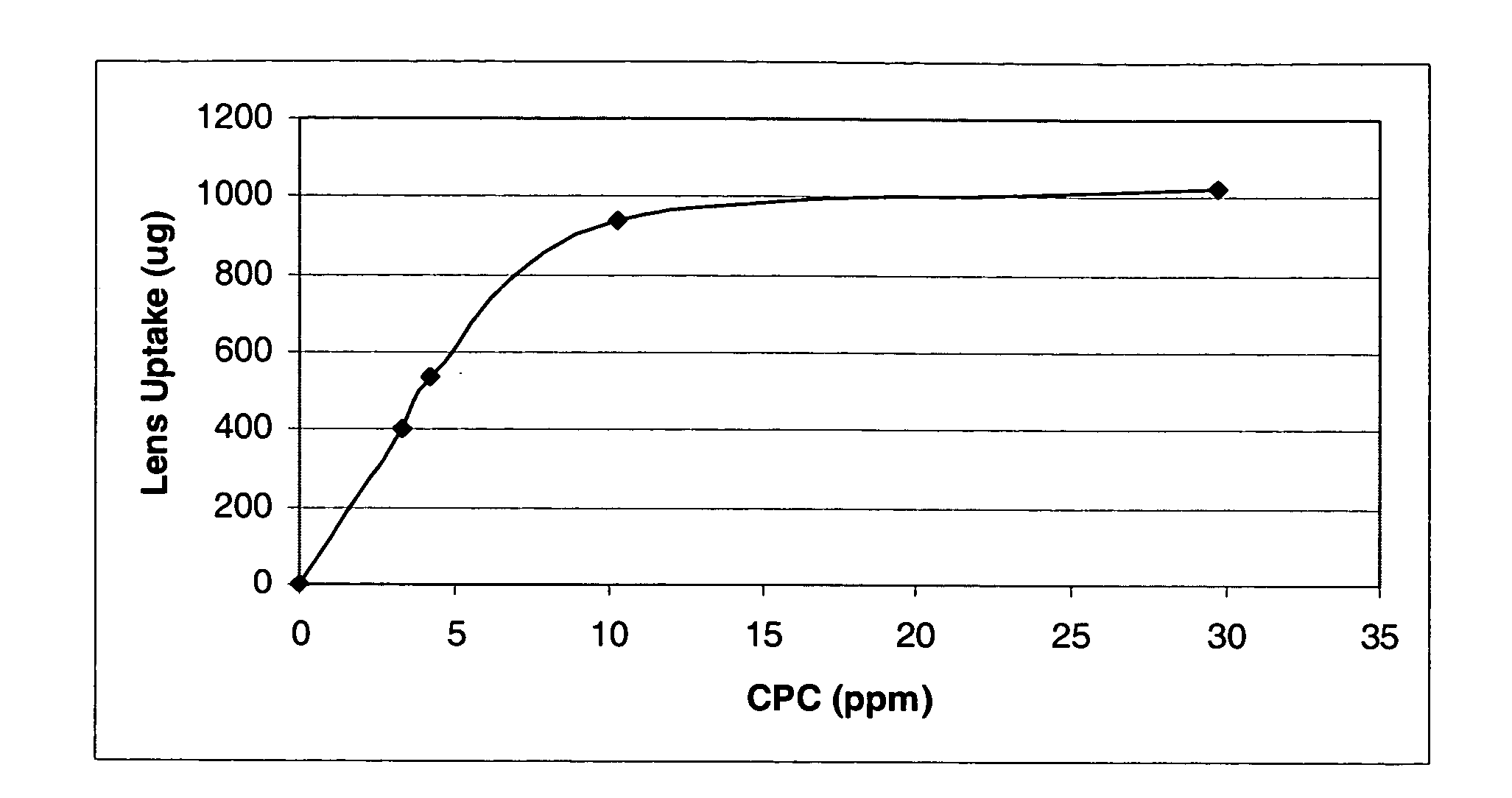Cetylpyridinium chloride as an antimicrobial agent in ophthalmic compositions
a technology of ophthalmic compositions and pyridinium chloride, which is applied in the direction of antibacterial agents, detergent compounding agents, cleaning compositions of lenses, etc., can solve the problems of inability to provide perfect in-eye performance, complex contact lens solutions, and adverse changes in ocular tissues and tear film
- Summary
- Abstract
- Description
- Claims
- Application Information
AI Technical Summary
Problems solved by technology
Method used
Image
Examples
Embodiment Construction
[0014] New compositions for treating contact lenses have been discovered. Specifically, it has unexpectedly been discovered that, while a contact lens can become fully saturated with CPC when exposed to solutions containing more than 10 ppm CPC, the amount of CPC uptake from solutions having a CPC concentration that is below 10 ppm by contact lenses is significantly reduced without losing antimicrobial efficacy. As discussed above, prior to the present invention it was commonly believed that CPC at or below 10 ppm was not efficacious as a disinfecting agent. The weak antimicrobial efficacy previously seen was likely due to the interaction between CPC and other ingredients such as surfactants which are commonly added to a product if wetting, solubilizing and cleaning functions are required. This is supported by the data shown in Table 1, which shows that antimicrobial activity reduced to an inefficacious level when 238 ppm tocopherol polyethylene glycol succinate (“TPGS”), a non-ioni...
PUM
| Property | Measurement | Unit |
|---|---|---|
| weight ratio | aaaaa | aaaaa |
| temperature | aaaaa | aaaaa |
| temperature | aaaaa | aaaaa |
Abstract
Description
Claims
Application Information
 Login to View More
Login to View More - R&D
- Intellectual Property
- Life Sciences
- Materials
- Tech Scout
- Unparalleled Data Quality
- Higher Quality Content
- 60% Fewer Hallucinations
Browse by: Latest US Patents, China's latest patents, Technical Efficacy Thesaurus, Application Domain, Technology Topic, Popular Technical Reports.
© 2025 PatSnap. All rights reserved.Legal|Privacy policy|Modern Slavery Act Transparency Statement|Sitemap|About US| Contact US: help@patsnap.com

